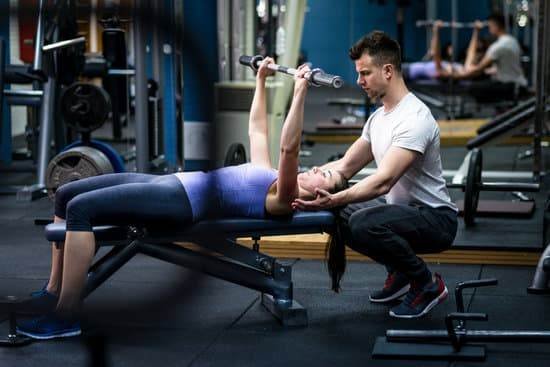Introduction
Thinking of becoming a personal trainer? Personal trainers help their clients achieve physical fitness goals through implementing various training methods. To become a personal trainer, you need to invest in the proper credentials and certifications that will allow you to train your clients safely and efficiently. In this blog post, we will discuss what certifications are required to become a personal trainer, how much they cost, and how they can benefit you professionally.
Education Requirements
To be a personal trainer, most states require that you have prior fitness knowledge and experience with proper safety protocols. Depending on the state, it may require additional certifications beyond a standard certification program. Generally, you will need to complete some type of formal education related to fitness training in order to become certified as a personal trainer. The majority of states accept an accredited university degree in the health sciences or exercise science fields as part of their requirements for certification.
In addition, many states also require that applicants have taken specific courses such as anatomy and physiology, nutrition, kinesiology/exercise science, CPR/AED/First Aid Certification, special populations (weight loss, pre/postnatal conditioning). You may also need proof of liability insurance in some locations before commencing your practice.
Some states have stricter licensing requirements than others in terms of prerequisite courses or minimum years of college study; so make sure to do your research accordingly when searching for educational requirements in order to become a certified personal trainer.
Exercise Science
Some of the credentials needed to become a personal trainer are:
A bachelor’s degree in exercise science or related field – this will give you a comprehensive understanding of the scientific basis of exercise and basic progression principles that can help you structure effective fitness regimens for your clients.
Specialist certification(s) from recognized organizations such as the American College of Sports Medicine (ACSM), National Strength and Conditioning Association (NSCA), American Council on Exercise (ACE), etc. – these certifications will allow you to work in specific focus areas, such as injury prevention, strength training, nutrition, and more.
CPR/First Aid Certification- this is an essential safety requirement for personal trainers, as it helps ensure that their clients can be taken care of in case there is an emergency.
Experience- though not always required, having some experience working with clients before becoming a personal trainer can be invaluable when it comes to better understanding individual needs and building client relationships. You may gain this experience by working at a gym or health club or through freelance gigs.
Credentialing Process
There are many certifying organizations offering credentials for personal trainers. Some of these organizations include the American Council on Exercise (ACE), National Academy of Sports Medicine (NASM), and National Strength and Conditioning Association (NSCA). Each organization has their own specific criteria for the application process such as exams, continuing education requirements, or experience.
The first step to becoming a certified personal trainer is to choose the certifying organization in which you would like to receive your certification through. Once you have selected the appropriate organization, you will need to complete the application which will require some paperwork and payment of a fee, as well as passing any necessary examinations required by that particular organization. For instance, ACE typically requires applicants to pass an online exam which covers topics such as anatomy, physiology, exercise technique, program design and safety assessment prior to being granted certification.
In addition, each certifying body may require continued education in order for personal trainers to maintain their certification status. This usually includes earning continuing education credits related to fitness-related topics utilizing approved providers from their respective organization within a specified timeline. Furthermore, most certifying organizations also require background checks due to liability issues within the industry and surrounding areas.
State Regulations
The regulations governing the profession of personal training vary from state to state. Generally speaking, the main areas of concern include certification, registration or licensure, education, continuing education and additional credentials.
In some states, a personal trainer can pursue their career after becoming certified through several accredited organizations. These certifications require coursework in anatomy and physiology, nutrition and exercise science, as well as a practical component requiring an in-person assessment that tests the trainer’s knowledge of exercise technique and form. Some states may allow trainers to be self-certified if they meet certain criteria.
In other states, additional registration or licensing is required. This may include background check screenings or proof that they have met certain educational or experience requirements (such as college credits or years of work experience).
Educational requirements typically vary by state but usually involve a combination of college credit courses in kinesiology or similar fields along with courses related specifically to personal training competencies such as weight training or core conditioning.
Many states also require ongoing continuing education to help trainers maintain their professional skills and keep up with developments in the industry. Continuing education requirement may be fulfilled through online courses and/or seminars conducted by educational institutions specializing in health care and fitness topics related to personal training.
Adams finally, many trainers choose to gain additional credentials above what their state requires such as first aid/CPR certification for safety reasons and specialty certifications for working with specific populations (e.g., youth sports coaching) which can enhance job opportunities.
Technology
In order to be successful as a personal trainer, it is essential to have an understanding of the use of technology in this field. Knowing how to track progress, manage client information, and access online resources are just a few of the necessary tech skills required for success. For example, training programs can be delivered more effectively when trainers understand how to use smartphone applications or fitness-tracking devices. Mobile apps also allow personal trainers to plan and customize their clients’ workouts with ease.
Additionally, virtual reality (VR) is becoming increasingly important in personal fitness. VR can help strengthen muscles and improve physical activity by simulating different environments and providing feedback on performance. By using VR, trainers will be able to expand their range of services so they can work with those who find it difficult or impossible to go outside for their workouts. Leveraging the capabilities of virtual reality could also open up potential new income streams through partnerships with electronic arcade games or similar activities.
Successful personal trainers stay abreast of technology developments in their fields and know how to adjust training techniques accordingly. The best personal trainers remain competent in existing software and are willing to learn new technologies that can help them offer better service and serve a wider range of clients. Continuing education courses or certifications related to exercise science and health technology may also be helpful for staying current on the latest trends in tech-driven fitness.
Nutrition
In addition to the credentials that are typically needed to become a personal trainer (such as being certified through an organization like the American College of Sports Medicine or National Strength and Conditioning Association), there are a few areas that you may want to consider delving into for added value as a personal trainer.
Nutrition is one such field, which is often integral to achieving fitness goals for clients. Knowledge of nutrition can help a personal trainer discuss how nutrition, calories, and macronutrients can impact a client’s specific fitness objectives from weight loss and muscle building, to gaining endurance or mobility.
By having an understanding of nutrition principles and nutrition coaching ideas, you will be able to provide your clients with guidance on what they should be eating in order to achieve their performance goals. This includes knowledge of food groups, energy sources (carbohydrates, proteins, fats), superfoods, portion sizes etc. You can also advise on supplements if appropriate or suggest recipes and meal plans suitable for their goals.
Nutrition education is something that many people seeking out personal training may find incredibly helpful along the way – so having some basic understanding of it will be extremely beneficial and increase your value as a personal trainer!
Conclusion
It is essential to do your research and get certified if you wish to become a successful personal trainer. With education and qualifications, you can gain the confidence of clients that allows them to trust you as their trainer. Additionally, this could open up opportunities for other jobs such as working at fitness centers or starting your own business. The credentials usually include certification from organizations such as the National Commission for Certifying Agencies (NCCA) or the American College of Sports Medicine (ACSM), continuing education courses on topics like nutrition, anatomy and physiology, first aid and CPR certifications, knowledge in specific areas like weight lifting and postural analysis, liability insurance, legal clearance for working with minors and many more. To ensure that these qualifications stay up to date it is important to renew them over time. Becoming a certified personal trainer might be an intimidating process but ultimately it will make you a better professional and offer many rewards.

Passionate about providing useful information to anyone with an interest in the field of Personal Training, I strive to pass on to our readers quality information and to answer any questions about Personal Trainers, the work they do and how to become one.





